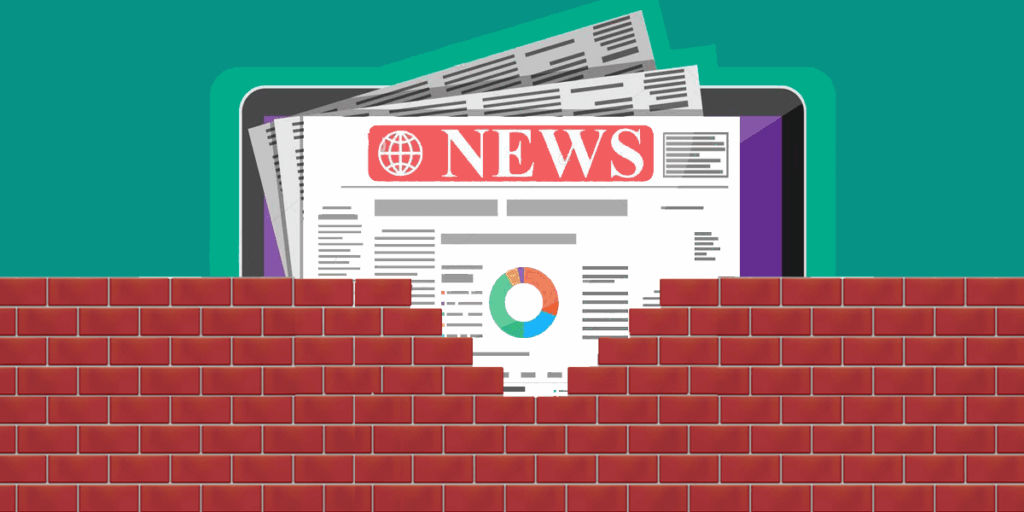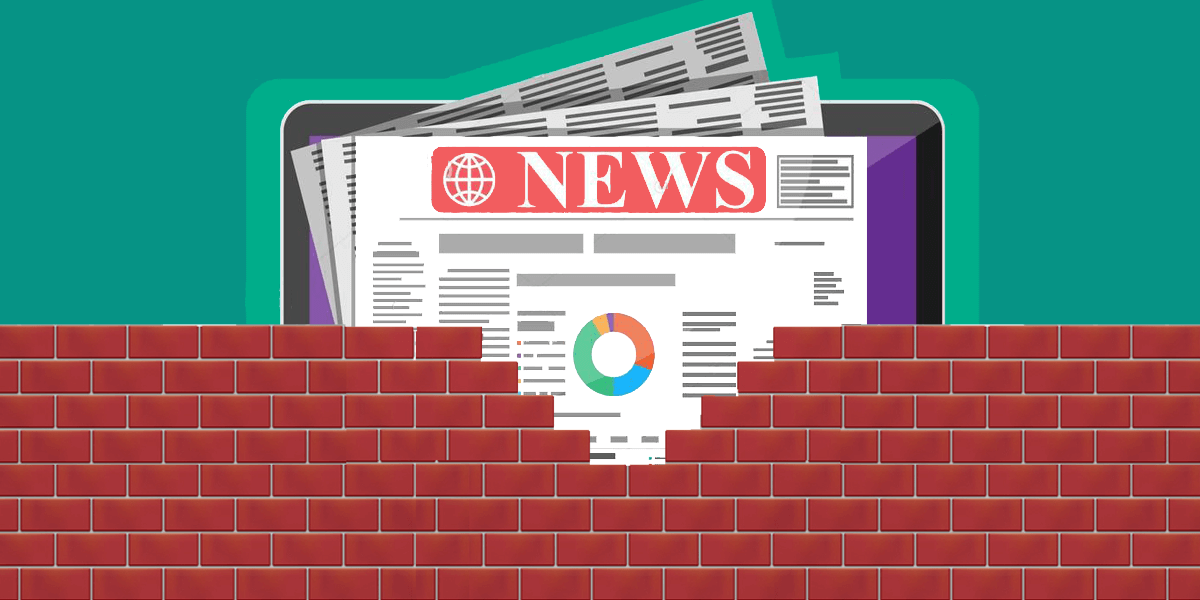
Navigating the News Paywall: Understanding Access in the Digital Age
In today’s digital landscape, accessing news and information has become increasingly complex. While the internet promised a world of free-flowing information, the reality is that many news organizations have implemented news paywalls to sustain their operations. These paywalls, which restrict access to content behind a subscription fee, have sparked debate about the balance between profitability and public access to information.
The Rise of the News Paywall
The shift towards news paywalls is largely driven by the decline in traditional advertising revenue for news publications. As readers increasingly consume news online, print subscriptions and ad sales have plummeted, forcing organizations to seek alternative revenue streams. News paywalls offer a direct way to monetize online content and maintain journalistic standards. The quality journalism many readers expect comes at a cost, and news paywalls are one way to ensure that the financial burden of production does not fall solely on advertisers.
The early days of online news saw a widespread expectation of free access. However, as the digital advertising market matured and the flaws of ad-supported business models became apparent, news organizations gradually began experimenting with different types of news paywalls. The New York Times, for instance, was one of the first major newspapers to successfully implement a news paywall, demonstrating that readers were willing to pay for quality journalism.
Types of News Paywalls
There are several different types of news paywalls, each with its own approach to restricting access:
- Hard Paywall: This type of paywall restricts all or almost all content to subscribers only. Non-subscribers are typically allowed to view only headlines or brief summaries.
- Soft Paywall (Metered Paywall): This allows users to access a certain number of articles for free each month before requiring a subscription. This is a common model that allows casual readers some access while encouraging frequent users to subscribe.
- Freemium Paywall: This offers a mix of free and premium content. Basic news and information might be available for free, while in-depth analysis, investigative reports, or exclusive features are behind the paywall.
- Dynamic Paywall: This type uses algorithms to determine when to present a paywall to a user, based on factors such as reading history, location, and device.
The choice of which type of news paywall to implement depends on the publication’s target audience, content strategy, and overall business goals. [See also: Strategies for Successful Digital Subscriptions] Some publications may even use a hybrid approach, combining elements of different paywall models.
The Impact of News Paywalls on Readers
News paywalls have a significant impact on readers, influencing how they access and consume news. For some, the cost of subscriptions may be prohibitive, limiting their access to important information. This can exacerbate existing inequalities, creating a divide between those who can afford to stay informed and those who cannot. This digital divide has raised concerns about equity and access to information, particularly in areas where local news outlets are struggling to survive.
However, many readers recognize the value of quality journalism and are willing to pay for it. They see subscriptions as a way to support independent reporting and ensure the continued existence of reliable news sources. For these readers, a news paywall is a fair exchange for access to in-depth analysis, investigative reports, and exclusive content. They also see the value in supporting local journalism through subscriptions.
The News Organization Perspective
From the perspective of news organizations, news paywalls are a crucial tool for survival in the digital age. As advertising revenue continues to decline, subscriptions provide a stable and predictable source of income. This allows news organizations to invest in quality journalism, hire talented reporters, and maintain editorial independence. Without news paywalls, many publications would struggle to stay afloat, leading to a decline in local news coverage and a weakening of the democratic process.
Implementing a news paywall is not without its challenges. It requires a careful balance between maximizing revenue and maintaining readership. If the paywall is too restrictive, it may alienate potential subscribers and drive them to alternative sources of information. If it is too lenient, it may not generate enough revenue to sustain the organization. [See also: Optimizing Paywall Conversion Rates] News organizations must also invest in marketing and customer service to attract and retain subscribers.
Ethical Considerations of News Paywalls
News paywalls raise several ethical considerations related to access to information and the public interest. Some argue that news should be a public good, freely available to all citizens, regardless of their ability to pay. They contend that news paywalls create a barrier to information, potentially leading to an uninformed electorate and a weakening of democracy.
Others argue that news organizations have a right to monetize their content and that news paywalls are a legitimate way to sustain their operations. They point out that quality journalism requires significant investment and that subscriptions are a fair way to support this investment. They also argue that news paywalls encourage readers to value news more and to be more selective in their consumption of information.
Finding a balance between these competing perspectives is a complex challenge. Some news organizations offer free access to certain types of content, such as breaking news or public service announcements. Others provide discounted subscriptions to students, seniors, or low-income individuals. These initiatives aim to mitigate the negative impacts of news paywalls on access to information.
The Future of News Paywalls
The future of news paywalls is likely to be shaped by several factors, including technological advancements, changing reader habits, and evolving business models. As digital subscriptions become more common, readers may become more willing to pay for access to multiple news sources. This could lead to the development of bundled subscriptions or all-access passes that provide access to a wide range of publications.
Artificial intelligence (AI) and machine learning (ML) are also likely to play a role in the future of news paywalls. AI-powered algorithms can be used to personalize the paywall experience, tailoring the subscription offer to individual readers based on their interests and reading habits. ML can also be used to predict which readers are most likely to subscribe and to target them with personalized marketing messages. This allows news organizations to optimize their news paywall strategy and maximize revenue.
Another trend that is likely to shape the future of news paywalls is the rise of micropayments. Micropayments allow readers to pay for individual articles or access to specific content, rather than committing to a monthly or annual subscription. This could be an attractive option for casual readers who only occasionally need access to premium content. [See also: Exploring Alternative News Revenue Models] Micropayments could also help news organizations reach a wider audience and generate additional revenue.
Overcoming the News Paywall
While news paywalls are designed to restrict access, there are several strategies readers can use to access content without paying for a subscription:
- Incognito Mode: Some paywalls can be bypassed by opening articles in incognito or private browsing mode. This prevents the website from tracking your browsing history and counting your article views.
- Library Access: Many public libraries offer access to online news databases and publications. Check with your local library to see what resources are available.
- Social Media: Sharing articles on social media platforms may allow you to bypass the paywall. Some publications allow access to articles shared on social media as a way to drive traffic.
- Browser Extensions: Certain browser extensions are designed to bypass news paywalls. However, be cautious when using these extensions, as some may compromise your privacy or security.
- Free Trials: Many news organizations offer free trials of their subscriptions. Take advantage of these trials to access premium content without paying.
Conclusion
News paywalls are a complex and evolving phenomenon that is reshaping the media landscape. While they pose challenges for readers seeking access to information, they also provide a crucial source of revenue for news organizations. Understanding the different types of news paywalls, their impact on readers, and the ethical considerations they raise is essential for navigating the digital age. As technology continues to evolve, news paywalls are likely to become even more sophisticated and personalized, requiring readers to adapt their strategies for accessing and consuming news.

